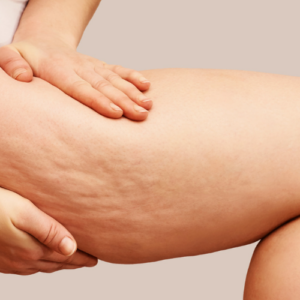
Collagen! That word flies around so much these recent times. Its usage in sentences may be a pointer to its vast application which cuts across various fields of human health. It is now available as pills, topical agents – cosmetics such as creams, soaps and powders. This article seeks to make you understand what collagen is and its benefits for your body.
Related article: Transforming your skin with laser skin treatments
What is collagen?
Collagen stands as the most abundant protein present in the body. It is found in the blood, skin, hair, bones, nails and all most every other tissue in the human body. Collagen contributes immensely to the structural integrity of connective tissues.
There are various types of collagen. This classification is a function of how they are adapted based on the role of the tissue they are located in plays. Primarily, collagen contributed to tissue regeneration as it promotes wound healing. Also, collagen acts as a tissue scaffold that holds tissues in place.
Type 1 collagen is the most abundant form. It is found in the skin, bones and other tissues. Its major function is to keep the skin firm, tender and smooth. So, you see why collagen is mostly used in the context of cosmetics?
Why does my body not have enough collagen?
Now that you know what collagen is, we should get into the talk. Before you learn how to boost collagen, you should first know why your body doesn’t have enough. There are many reasons why you may not have enough collagen in your body.
One common cause of collagen depletion is aging With ageing, many mechanisms of your body lose effectiveness including your metabolism. The synthesis and storage of collagen might be reduced as a result of impaired metabolism. This generally starts from the age of 25. Sadly, there is no way to stop this depletion. In addition, the body finds it difficult to absorb nutrients effectively with age. This makes the “raw materials” needed for the process unavailable.
Malnutrition is another factor that leads to reduced collagen levels in your body. Collagen is a protein made from the aggregation of many amino acids to form a three-dimensional structure with glycine and proline as the most important components. The amino acids that are used to create collagen are obtained mostly from food. Hence, nutrition is important in collagen formation. Malnutrition, particularly the consumption of food poor in protein content, will also lead to reduced collagen formation.
Effects of low collagen levels
At the joints, collagen is found in the cartilage that covers the bones at that joint. These cartilages are important in the articulatory functions of the joint as it moves. When collagen stores are depleted, there may be joint pain arising from the wear and tear of the cartilage. This worn-out cartilage may even progress into osteoarthritis.
Collagen is also found in the muscles, tendons and ligaments of the body. It provides rigidity for the structural framework of these issues. When there is a deficiency, there will be a reduction in your muscle mass (the bulkiness of your muscles) and muscle weakness. The tendons and ligaments become stiffer, and this makes movement more difficult.
In cosmetics, collagen is very important to ensure beautiful ravishing skin. Low levels of collagen cause the skin to lose its firmness and tenderness. This will give you rough skin and wrinkles.
Related article: Are Skin Rejuvenation Treatments Worth The Money
How to improve collagen formation
The importance of collagen in the body is indispensable. Its ubiquitousness makes it very essential for normal body functioning and body aesthetics. Having learned about the basic mechanisms through which collagen deposition might reduce, you should have an idea on how to improve collagen formation and boost the beauty of your skin. Some tips that will help boost your body’s collagen levels include:
Proper nutrition
In order to synthesize collagen, your body has a way of combining amino acids. Remember that amino acids are the basic units of any protein. These amino acids are obtained from the breakdown of protein-rich meals like meat, fish, dairy products, eggs and beans.
It is a rather complex process that requires the use of various organelles in the cells. The synthesis also requires vitamins like Vitamin C and some minerals such as zinc and copper. Fruits and green vegetables are a great source of vitamin C, while cereals and seafood are good sources of copper and zinc.
Since ageing reduces the rate of absorption of these nutrients, it is important to take them in higher quantities. This way, more of these nutrients will be absorbed by the body. Bone broth is also recommended as a great source of nutrients to improve collagen production. You can get it from a grocery store or prepare it by yourself.
Related article: Best Ways to Hydrate Your Skin
Collagen supplements
Some supplements are specially crafted to boost the level of collagen in the body. These supplements come in various forms. You just have to choose the one that best suits you – powder, tablets, cream etc.
You may add collagen powder to drinks such as smoothies and beverages. Collagen peptide is a hydrolyzed form of collagen which comes in powder form. Typically, it does not have a flavour and can be added to your soups and drinks as it dissolves readily.
Alternatively, you can take powdered gelatin. This is collagen in its cooked form. It easily increases the level of collagen in your body. Similar to bone broth, it can be added soups, other meals or even the broth. You can also add it to your cup of keto beverage.
Creams
Skin creams that are rich in collagen are also very effective. In addition to improving your collagen deposition, it helps to screen your skin from environmental elements and prevents water loss. It does this by adding a film layer to the skin. This improves the quality of your skin and makes sure that your skin is firmer, radiant and devoid of wrinkles.
Retinoids
Another choice you can explore is the use of retinoids. Retinoids also contain Vitamin A and are perhaps the most researched anti-ageing agent. It is effective in the reduction of wrinkles and fine lines with results evident in about six months of consistent use. Various modifications have been made from the first products released years ago. Retinoids are considered the gold standard in cosmetic skincare.
Retinoids function by stimulating the synthesis of collagen, which helps to hold your skin firmly. They also stimulate neovascularization (development of new blood vessels). This will give you an even skin tone. Regular use of retinoids has been found to make spots and patches fade out. They help to slow down the breakdown of collagen.
The side effects of retinoid use include dryness of the skin and irritation. It is therefore recommended that you start with intermittent use before making it regular. Consequently, you can start by using it every two days and gradually increase your usage until you can use every night. During the day, you should use sunscreen because the sensitivity of your skin is increased with the use of retinoids.
Over-the-counter medication
In addition, there are over-the-counter preparations that contain retinoids, like retinol. They are typically not as strong as pure retinoids, so they cause less irritation. Although, this considerably reduces their effectiveness in stimulating collagen synthesis. Hence, wrinkling might not be reduced as effectively when compared to retinoids.
Antioxidants
Antioxidants are agents capable of protecting your body from the possible damage from free radicals. Although not all antioxidants will boost collagen levels, they will ensure the effective utilization of collagen already present in the body.
There are various types and forms of antioxidants which are found in various food nutrients. Examples of such sources include green tea, blueberries, cinnamon, yerba mate, and so on.
Sunscreen
Using sunscreen can help protect your skin from the damaging effects of the ultraviolet rays of the sun. Unfriendly weather conditions increase the breakdown of cells and make your skin lose its structural system, which is mostly comprised of collagen.
Cosmetic procedures that can boost collagen levels
Thanks to innovations in cosmetic tech, multiple procedures can boost your body’s collagen production levels. We will discuss a few of them in this section.
Related article: 5 Best Anti-Aging Treatments
Microdermabrasion
Microdermabrasion is a method of boosting collagen and getting rid of wrinkles that involve the use of abrasion to “peel” off your skin. It is a minimally invasive therapy capable of renewing your overall skin tone, texture and skin quality. It is also useful as a remedy for skin damage, wrinkling skin and fine lines, acne scars, age spots and many other skin issues.
This procedure involves the use of a special kind of roller that has an abrasive surface. This equipment gingerly scrapes away your skin’s thick outer layer. By removing the rough outer layer of your skin, it exposes new smoother skin. Microdermabrasion also creates tiny micro-wounds that stimulate your body to produce more collagen.
Some other forms of microdermabrasion use fine aluminum oxide particles or particles of sodium bicarbonate. This technique involves spraying the fine particles with a vacuum/suction to create an abrasive effect. The end result of microdermabrasion is a boost in collagen levels as well as a reduction in the appearance of wrinkles and fine lines.
Cost of microdermabrasion
Usually, your medical insurance will not cover the cost of your microdermabrasion procedure because it is regarded as a cosmetic procedure. This means you may have to pay out of pocket.
A single microdermabrasion session can cost up to $500, according to the American Society of Plastic Surgeons, although this cost varies with different factors. The basal price is cost-effective when compared to other minimally invasive procedures available.
Major factors that determine the cost of the procedure include:
- The quality of the Medical Aesthetician: The best experts tend to charge a lot more. Therefore, the cost of the procedure is affected by the proficiency of your aesthetician.
- The site to be treated: The wider the surface of the skin to the treated, the higher the cost. You might also need to have more than one appointment. Therefore, it may cost more, depending on the number of sessions you need.
- Location: The average cost of living in some cities can affect the price of your microdermabrasion sessions.
Precautions
For the best results, it is essential that you take some precautions. It is a minimally invasive procedure. Therefore, you do not need to be overly worried about the side effects associated with the procedure.
First off, you have to engage in a consultation session with a medical aesthetician to ensure that the procedure is suitable for you. Do not forget to mention your previous surgeries, procedures as well as any drug allergies.
You would be told to stay away from direct sunlight and tanning creams for about one week before your treatment. The one-hour procedure is usually done on an outpatient basis. Also, it involves numbing your face beforehand. Therefore, you should not feel pain during the procedure.
The side effects of the procedure include pain after the anesthetic agent wears off. Other side effects include swelling and skin redness. These are usually resolved in a couple of hours following the procedure. It is strongly recommended that you use a moisturizer to minimize dry and flaky skin. Following the procedure, there is a downtime of about half a day. At most, you should be able to resume your daily activities within a day or two after your treatment.
Laser treatment
Lasers are important tools in dermatology and cosmetology due to their wide range of application. They are also considered to be a non-invasive treatment option. They involve the use of light energy concentrated in a beam. The energy is absorbed by the cells in the treated area. The mitochondria, which serve as the powerhouse of your skin cells, will trap the energy to stimulate cell growth and healing process.
Additionally, laser treatments heat the dermis layer of your skin. This stimulates collagen production making sure that your body has enough collagen to replenish and revitalize your skin.
It is a common misconception to believe that lasers might peel off the surface layers of the skin leading to a pale and whitish skin underneath. The lasers available today are capable of penetrating your skin and boosting the production of collagen without peeling off the surface layer of the skin. They also work by targeting dead and damaged tissues in the treatment area.
Chemical peels
This involves the use of acidic chemicals to breakdown the superficial surface of the skin. It is used in the treatment of uneven skin tone, wrinkles and fine lines. There are various types of chemical peels based on the depth of their penetration. They include deep-depth, medium-depth and superficial.
During chemical peels, the breakdown of the outermost layer of your skin stimulates collagen production. Your skin automatically starts producing collagen to improve wound healing and the development of fresh skin.
Related article: The Benefits of Chemical Peels
Lifestyle activities that boost collagen production
You can boost the collagen production and synthesis of your skin by implementing some lifestyle changes. Some of them include:
Reducing the production of free radicals
Habit and environmental predispositions may cause an increase in free radicals in the body. This can disrupt the normal structure of your body. More to the point, it prevents the synthesis of structural proteins, including collagen and elastin.
Cigarette smoking exposes you to a significant amount of free radicals which might impede the generation and utilization of collagen. Air pollution also contributes to the generation of free radicals.
Good Nutrition
A good diet is essential for collagen formation. Nutrients such as vitamins A and C and minerals like copper and zinc improve your body’s collagen production rate. Slow wound healing, gum bleeding and hemorrhages under the skin are evidence of poor collagen formation from the deficiency of vitamin C. Meals rich in vitamin C will definitely help. Amino acids, such as proline and glycine, also contribute to increased collagen levels.
Regular Exercise
Exercise also leads to increased collagen production. It increases the thickness of the skin and slows down the signs of ageing in the body. Exercise increases blood flow to the skin, improving the supply of nutrients, oxygen and human growth hormones, which are normally reduced with age. Engaging in regular exercise will reduce the rate of collagen depletion, prevent wrinkling and other telltale signs of ageing.
Summary
Collagen is vital for smooth, radiant skin. Unfortunately, as we grow older, our bodies produce less collagen. Thankfully, treatment methods, such as chemical peels and laser treatments can be used to stimulate increased collagen production. Our experts can determine the best treatment to give you that radiant skin that you desire. Contact us today!
Book Free Consultation
"*" indicates required fields
-
Facebook
-
Twitter
-
Linkedin






